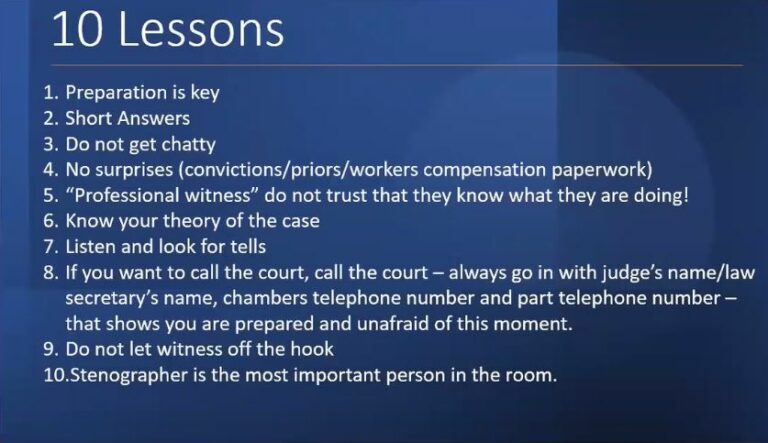Ten Deposition Lessons You Don’t Want to Learn the Hard Way
7.13.2023

Planning, preparation and mastering your presence during a deposition are key to a successful experience. Scott Occhiogrosso, partner at Block, O’Toole and Murphy, hosted a CLE called “Ten Deposition Lessons You Don’t Want to Learn the Hard Way.”
Occhiogrosso specializes in catastrophic construction accidents and serious personal injury cases in New York City. His background includes years in the Brooklyn County District Attorney’s office and work representing NYPD and New York Port Authority officers. He brought years of experience and insight to the seminar and offers these tips for new attorneys and seasoned veterans alike.
Prepare
Preparation for a deposition is not only focused on research, but readying clients for the hours-long event. Occhiogrosso encourages attorneys to slip into the shoes of the client. Facing the opposing counsel and recounting a traumatic event can be terrifying for a witness.
The preparation is best done in three sessions. First, explain the process in detail and what each person’s role is. Talk to clients about their role and how objections will work if an inappropriate question is asked. Establish a code word or phrase such as “do you need to take a break” that alerts the client that you both need to leave the room.
When it comes to personal injury cases, Occhiogrosso explains that clients need to understand that the opposing counsel represents the insurance company and will report back to them on the validity of the case. A deposition is the chance for the client to make a good first impression while conveying a likeable and trustworthy demeanor.
Train the client to respond in short answers and only to the question asked. It’s not a normal conversation. Occhiogrosso says the time to speak longer and in greater depth comes when the client explains how the injury has impacted their life.
“This is the day when you unearth all the suffering you have experienced. Take us with you on the journey with you into the valley of pain,” he says, “Paint the picture for us, you are the only one with that brush.”
He encourages clients to keep a journal to record everyday experiences that are more difficult following an injury. This could include such things as experiencing back pain when you bend over to tie your shoe, or not being able to rush across the street when the walk signal is changing. These are the images that resonate.
A second preparation session of “nuts and bolts” covers convictions, prior injuries and reviewing records. The question of prior injuries is vital because it’s important to determine if pain was caused by a previous injury and whether this injury exacerbated that. Go over each report to check for accuracy and be prepared to explain any discrepancy.
Many times, a case will have what Occhiogrosso calls a “professional witness.” It’s a member of a company or union who often testifies. These witnesses tend to think they are very good at this part of their job. Occhiogrosse warns against trusting anything from these witnesses -prep them just as hard as the accident victim.
“This witness can make dire mistakes, more than the lay witness. They don’t keep it short. They can get talking and it’s not good for your client,” he says.
The third practice session is a full-scale run-through. Use different presentation styles and enlist help from other members of your firm to play opposing counsel.
Presence
“You have to be a better listener than talker to be a trial attorney,” says Occhiogrosso. “When you are fully present, you can pick up on clues and it will give you the advantage.”
If you are completely present, you can assess what makes witnesses tick. Look for tells: long pauses, changes in the speed of speech or voice intonation. These could signal that you have hit a nerve.
Perseverance
Depositions are often lengthy, and clients must be prepared to go the distance. While respecting all in the room – fear no one and maintain an attitude of control. Prepare for confrontation and have the phone number of the judge’s chambers ready. Don’t be caught off guard by this tactic. Have a game plan ready to address a witness who is lying.
Occhiogrosso closed with a reminder that the court plays a vital role in a deposition. He says the stenographer is the most important person in the room. Understand and respect their work by speaking slowly and clearly so they can get an accurate record. If witnesses are testifying in another language, wait for the interpreter.







